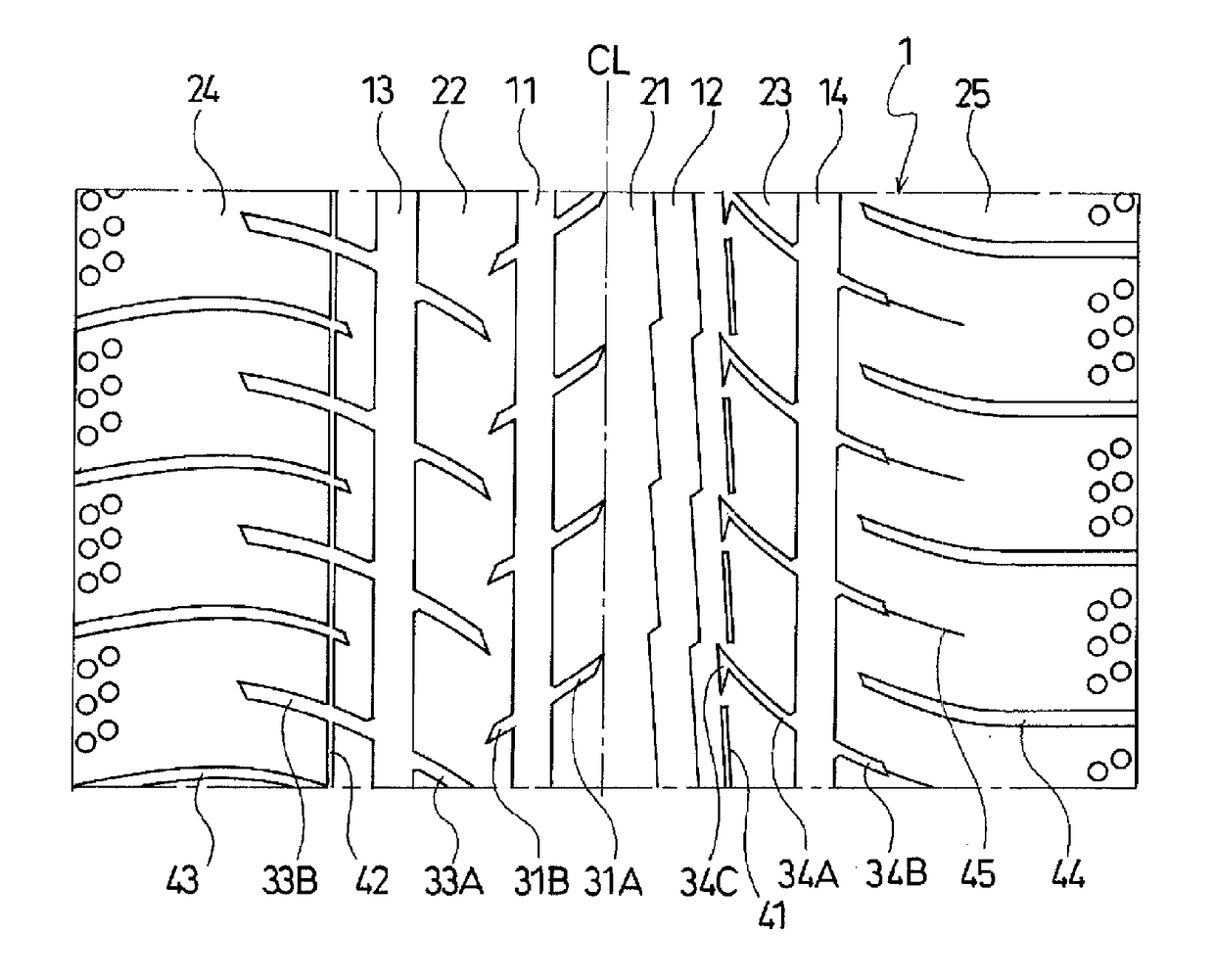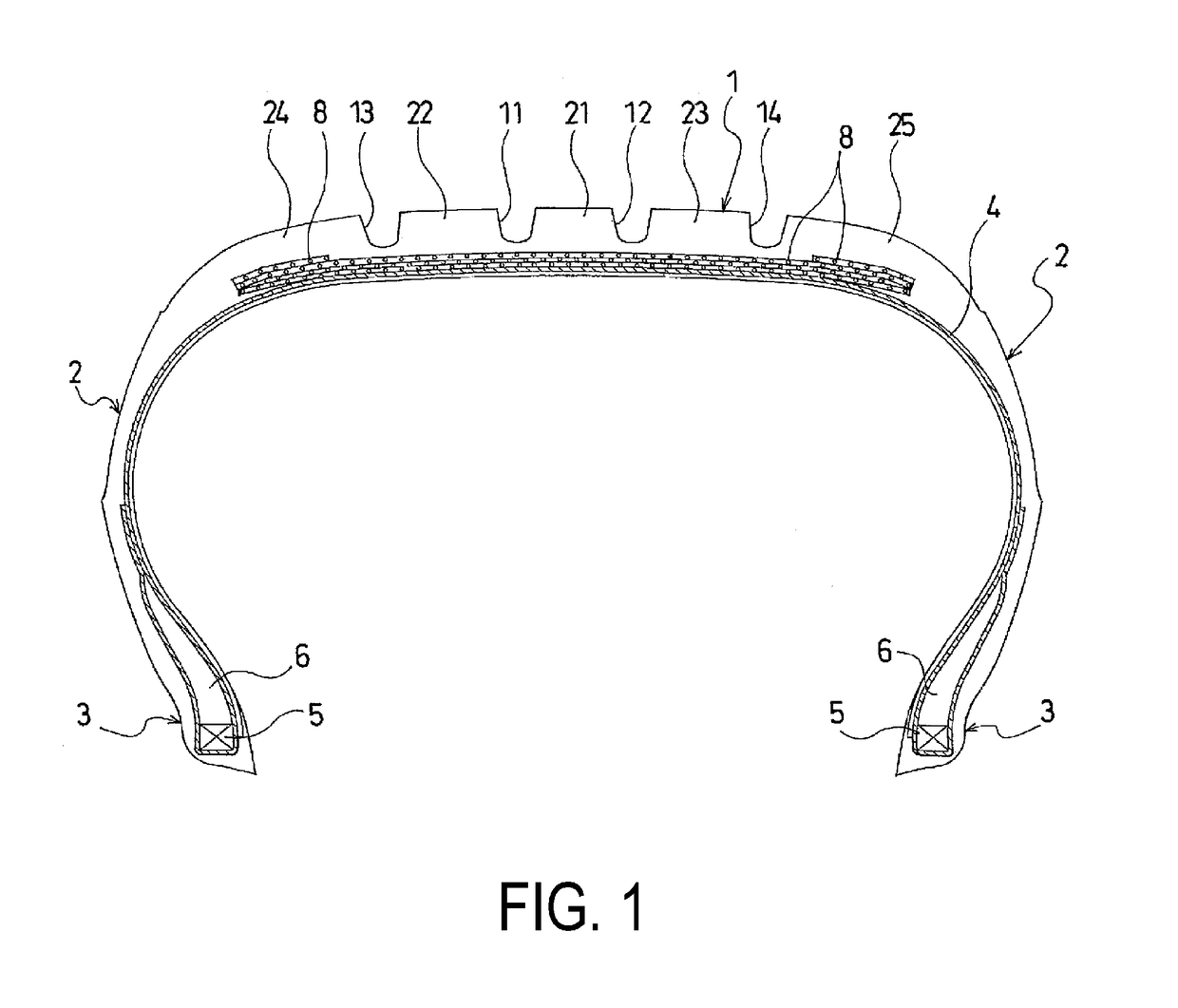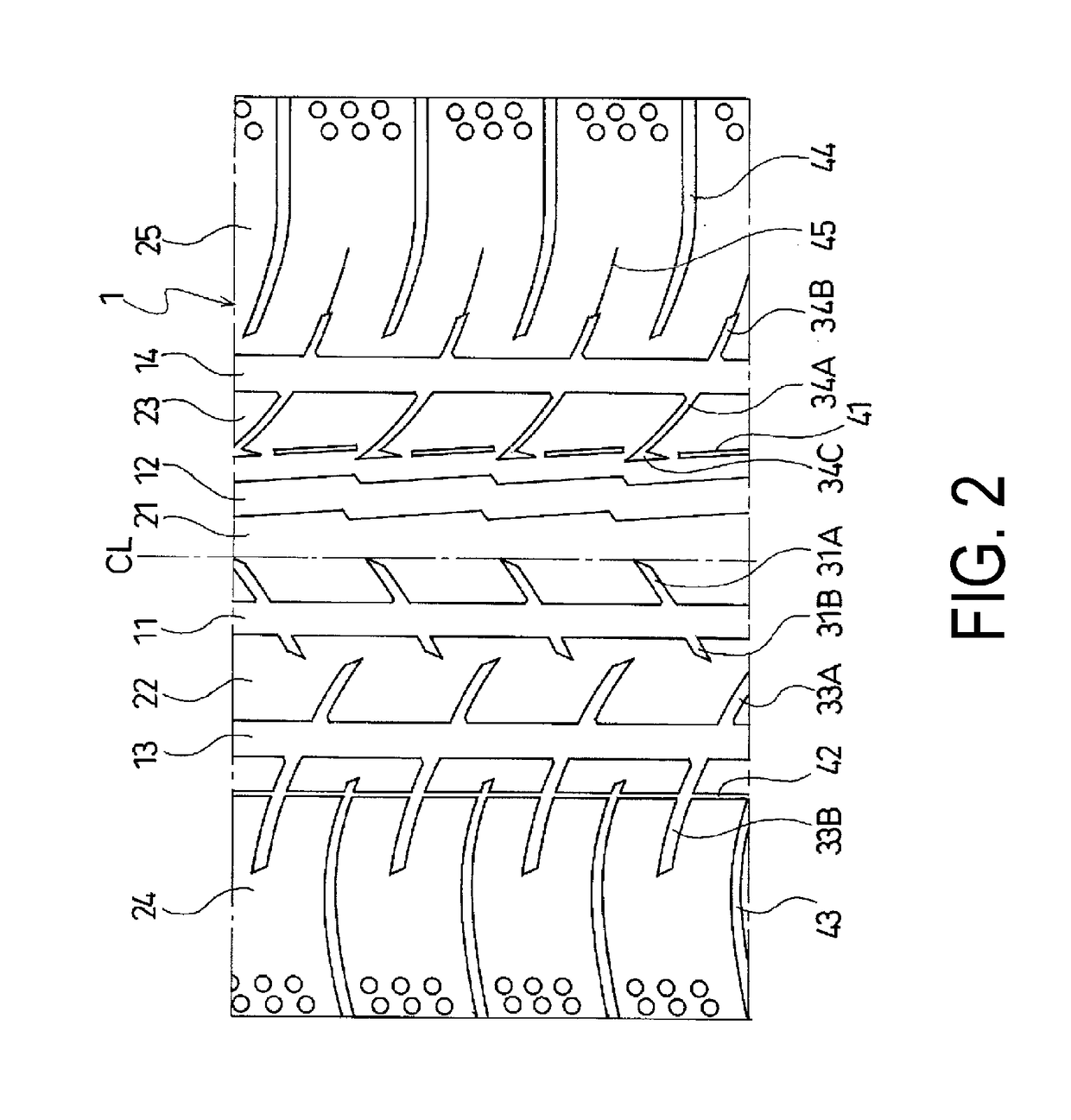Pneumatic Tire
a pneumatic tire and tread technology, applied in the field of pneumatic tires, can solve the problems of reduced rigidity of the tread portion, decreased drainage performance, and decreased steering stability on dry road surfaces, so as to improve steering stability, enhance wet performance, and ensure steering stability
- Summary
- Abstract
- Description
- Claims
- Application Information
AI Technical Summary
Benefits of technology
Problems solved by technology
Method used
Image
Examples
examples
[0037]Tires of Examples 1 to 7 were manufactured with a tire size of 215 / 55R17. The pneumatic tires each included a tread portion, a pair of sidewall portions, and a pair of bead portions. As illustrated in FIG. 2, the pneumatic tire was provided, in the tread portion, with four main grooves including a pair of center main grooves extending in the tire circumferential direction and a pair of shoulder main grooves located outward of the center main grooves and extending in the tire circumferential direction; these main grooves defined five rows of land portions; one of the center main grooves had a zigzag shape in the tire circumferential direction, and the other main groove had a straight shape; a plurality of lug grooves extending inward from the shoulder main groove in the tire lateral direction and terminating without communicating with the center main groove were provided in the land portion located between the zigzag center main groove and the shoulder main groove; the lug groo...
PUM
 Login to View More
Login to View More Abstract
Description
Claims
Application Information
 Login to View More
Login to View More - R&D
- Intellectual Property
- Life Sciences
- Materials
- Tech Scout
- Unparalleled Data Quality
- Higher Quality Content
- 60% Fewer Hallucinations
Browse by: Latest US Patents, China's latest patents, Technical Efficacy Thesaurus, Application Domain, Technology Topic, Popular Technical Reports.
© 2025 PatSnap. All rights reserved.Legal|Privacy policy|Modern Slavery Act Transparency Statement|Sitemap|About US| Contact US: help@patsnap.com



